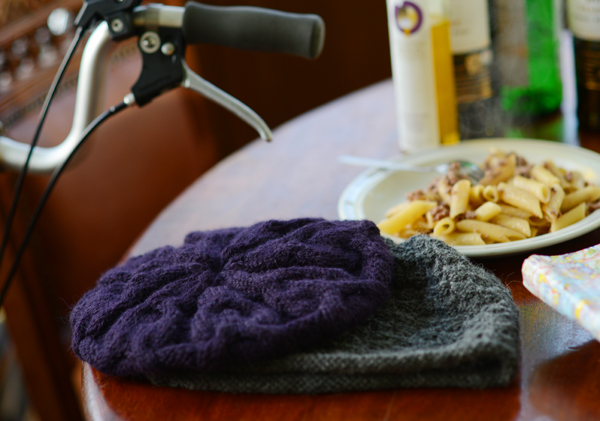
This approach to knitting has its benefits. However, it also means that I am terrible at explaining to another person how I made a particular garment. It seems so obvious to me, that I find myself saying things like, "well, just - you know - knit a beret shape!" (they: "but… ??!!")
In the midst of such conversations, I am fully aware how frustrating it must be - particularly for a novice knitter - to talk to someone like me. Because that's how I feel talking to anyone for whom cycling is so intuitive, such second nature, that any attempt to break down technique into a step-by-step process is beyond them. "What do you mean how do you climb standing?" such a person might say, "you stand up on the pedals and do it!" Right. Just like you'd pick up the needles and knit a beret.
It may seem that cycling and knitting have little in common. But in fact every productive and performative activity involves, on some level, mastering a sequence of distinct steps. The earlier in life we learn this activity, the more naturally we take to it, and the more frequently we practice it, the less aware we are of those steps - the more seamless and unconscious the sequence becomes. We go through it automatically, unthinkingly, and in so doing we might even genuinely believe that the act is, or "should be," that way for everyone. But the thing is, it might not be. It really might not.
If I consider the way I do the things I do, I realise that cycling is one of the very few activities I do on a regular basis and enjoy doing, where I give any explicit thought to process. Everything else - be it cooking, photography, painting, knitting or dancing - I do on a more unconscious, automated level. Technique is involved, but I've internalised it to the point where it has become invisible unless I really, really force myself to acknowledge it. Maybe over time, it will be the same with cycling. Or maybe it never will. In the meanwhile, I try to be more mindful of the way I explain my process to others, if they ask me questions about activities that to me seem self-evident.




0 comments:
Post a Comment